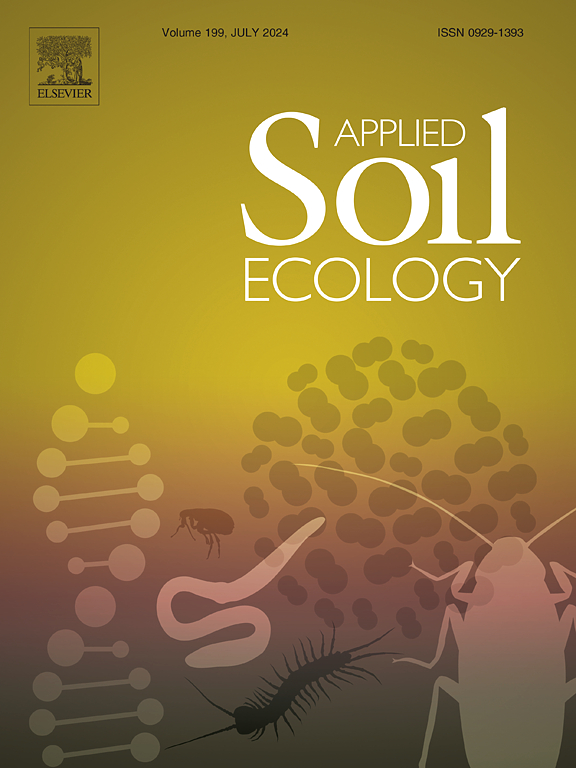Elevation-dependent distribution of soil microbial necromass carbon in Pinus densata Mast. forests
IF 4.8
2区 农林科学
Q1 SOIL SCIENCE
引用次数: 0
Abstract
Soil microbial necromass carbon (MNC) is an important component of soil organic carbon (SOC). However, its distribution patterns and driving mechanisms in alpine forest ecosystems remain understudied. MNC plays a crucial role in soil carbon storage and stability, profoundly influencing the carbon cycling in sensitive ecosystems and under climate change. Therefore, elucidating the distribution patterns of MNC and the factors driving them is essential for understanding the carbon cycle in alpine ecosystems and predicting the impacts of climate change. This study focuses on the Pinus densata Mast. forests of the Sygera Mountain, examining the distribution of MNC by collecting soil profile samples from 0 to 40 cm depths along an elevational gradient (3100 m, 3400 m, and 3700 m). Our findings reveal the following: 1) The total MNC decreases with elevation, and fungal necromass carbon content is significantly higher than bacterial necromass carbon at all elevations and soil depths; 2) Microbial necromass carbon content decreases with increasing soil depth, and its relative contribution to SOC increases with depth; 3) The content of MNC is primarily regulated by the joint effects of environmental factors and microbial characteristics, with soil nutrient content, elevation gradient, and microbial features being the main factors influencing the accumulation of MNC. This study elucidates the distribution patterns and driving factors of microbial necromass in alpine forest ecosystems, providing crucial scientific insights into the soil microbial carbon cycle in alpine ecosystems.
松林土壤微生物坏死体碳的海拔分布特征。森林
土壤微生物坏死体碳(MNC)是土壤有机碳(SOC)的重要组成部分。然而,其在高寒森林生态系统中的分布格局和驱动机制仍未得到充分研究。跨国公司在土壤碳储存和稳定中起着至关重要的作用,深刻影响着敏感生态系统和气候变化下的碳循环。因此,阐明跨国公司的分布格局及其驱动因素对于理解高寒生态系统的碳循环和预测气候变化的影响至关重要。本研究以松木为研究对象。研究结果表明:1)土壤有机质含量随海拔高度的增加而减少,在所有海拔高度和土壤深度,真菌坏死体碳含量均显著高于细菌坏死体碳含量;2)微生物坏死块碳含量随土壤深度的增加而降低,对有机碳的相对贡献随土壤深度的增加而增加;3)微生物含量主要受环境因素和微生物特征的共同作用调控,土壤养分含量、海拔梯度和微生物特征是影响微生物含量积累的主要因素。本研究阐明了高寒森林生态系统微生物坏死块的分布格局和驱动因素,为高寒生态系统土壤微生物碳循环提供了重要的科学见解。
本文章由计算机程序翻译,如有差异,请以英文原文为准。
求助全文
约1分钟内获得全文
求助全文
来源期刊

Applied Soil Ecology
农林科学-土壤科学
CiteScore
9.70
自引率
4.20%
发文量
363
审稿时长
5.3 months
期刊介绍:
Applied Soil Ecology addresses the role of soil organisms and their interactions in relation to: sustainability and productivity, nutrient cycling and other soil processes, the maintenance of soil functions, the impact of human activities on soil ecosystems and bio(techno)logical control of soil-inhabiting pests, diseases and weeds.
 求助内容:
求助内容: 应助结果提醒方式:
应助结果提醒方式:


